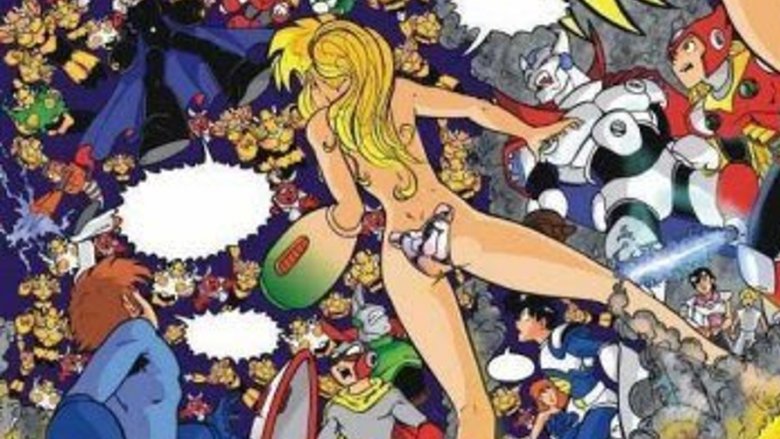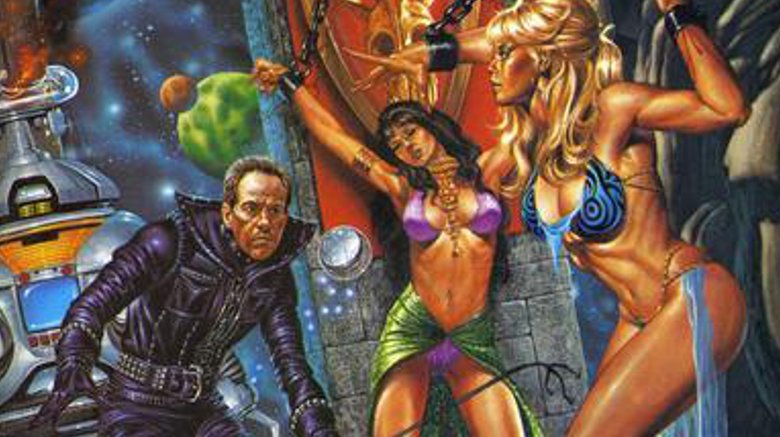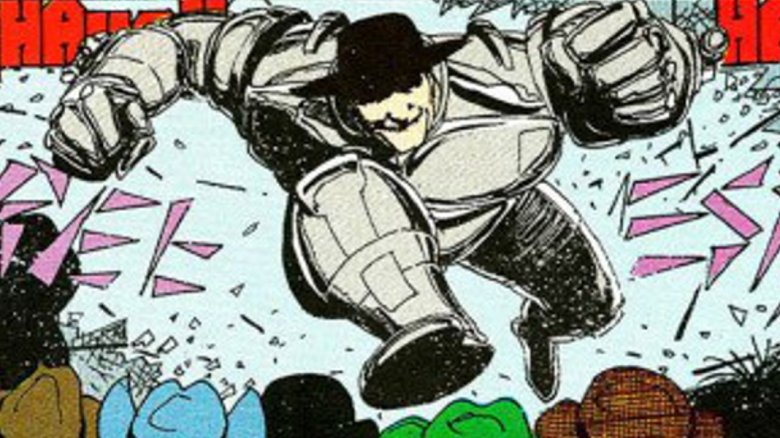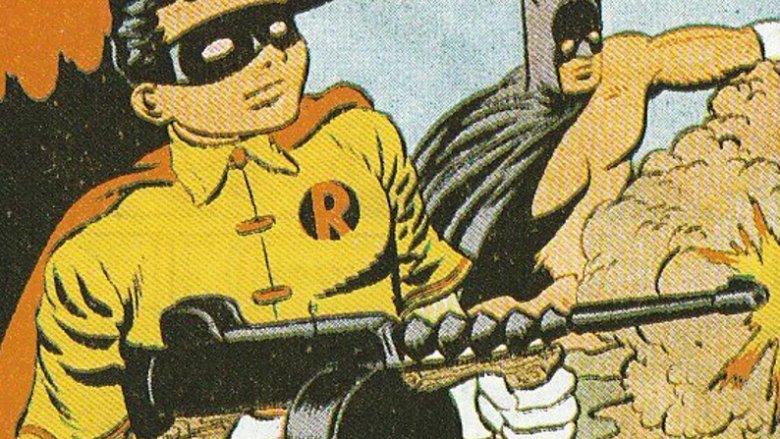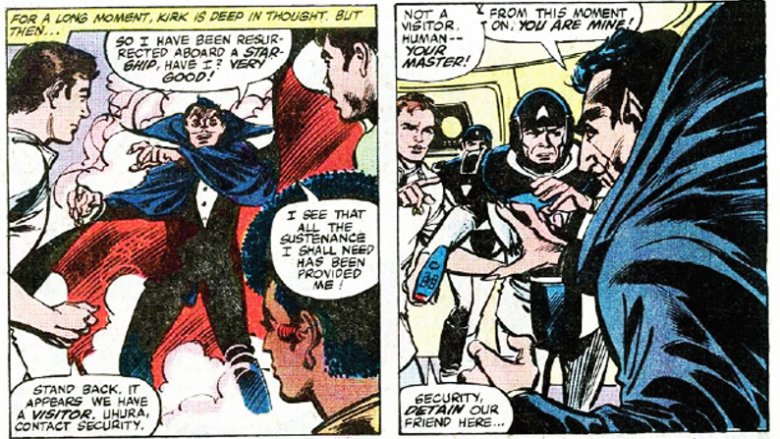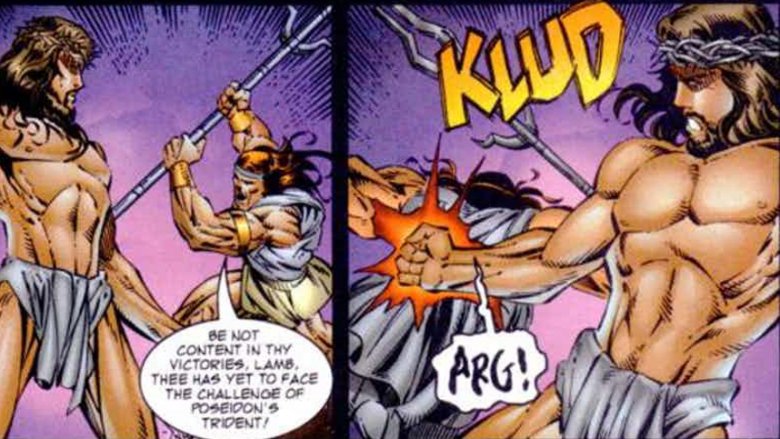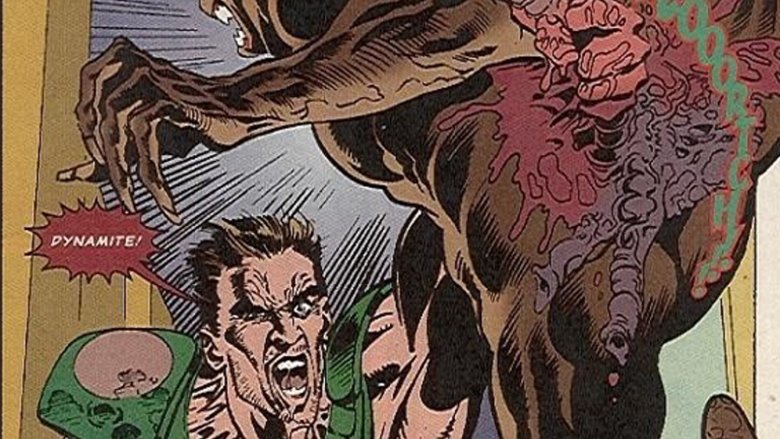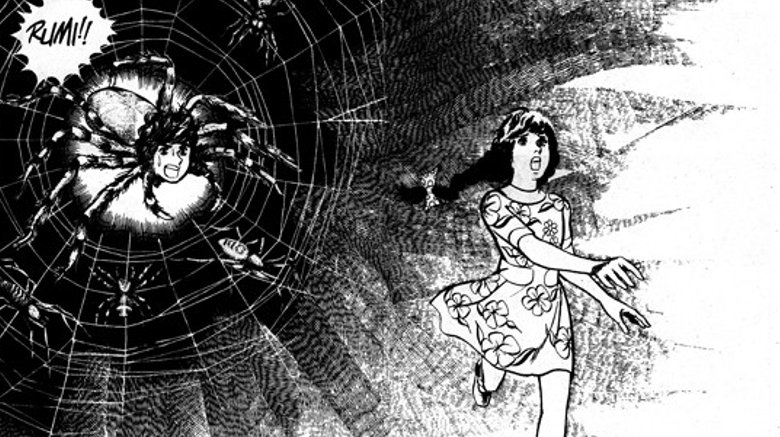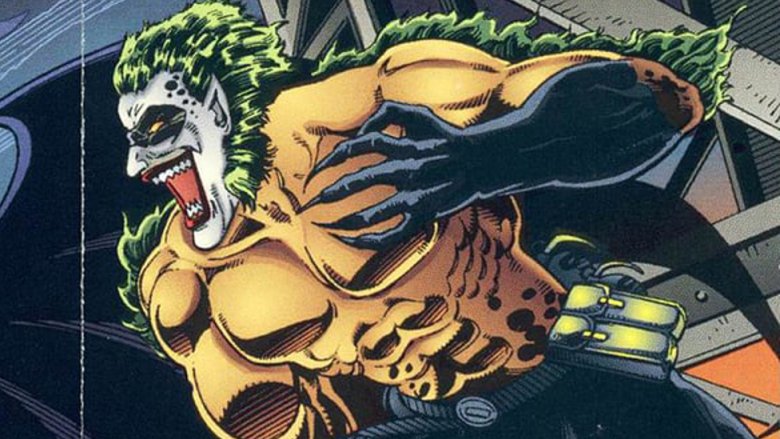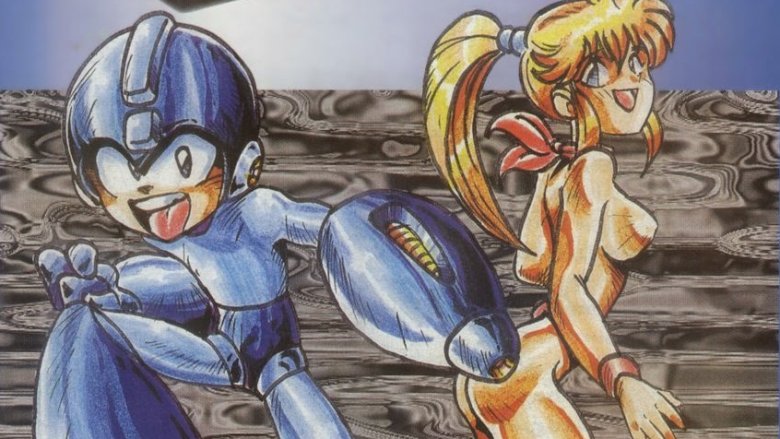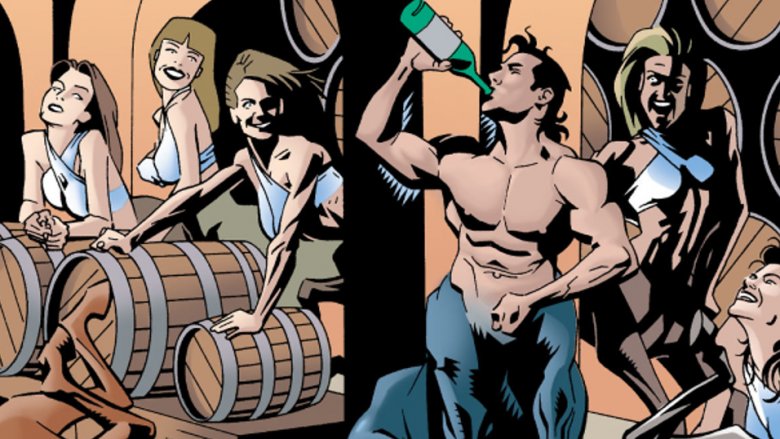Weirdest Comic Book Adaptations Of Famous Characters
If you're watching a movie these days, chances are it's based on some sort of comic book. (Wasn't La La Land a Frank Miller title in the '80s?) But what about the other way around, when comics are the ones doing the adapting? Whether it's a movie, a video game, or just a blatant rip-off of another company's graphic novels, when popular characters get the comic book treatment, things often go very awry.
Lost in Space get sexual
Lost in Space, CBS's hokey "Swiss Family Robinson in space" series, had been off the air for 23 years by the time Innovation Comics landed the rights. With fans not exactly clamoring for further stories from the Jupiter 2 crew, the Innovation team made a bold move. They introduced breasts. Yup, the creative team clearly knew their audience liked a little ass with their astronauts, and that's what they gave them for 18 creepy issues.
That's why young Penny Robinson, an 11-year-old genius in the TV pilot, had now become a very nubile, curvaceous woman in the comic relaunch, while her mother Judy was still very much in her cougar prime. And, because these randy Robinsons were in outer space, there were bound to be a few shenanigans that resulted in the girls losing their clothes. That's just science.
Whether their uniforms were torn to shreds, soaked through, or just straight up stripped off, these ladies were shirtless more than Captain Kirk during sweeps week. Gone were the days of Will Robinson and his trusty robot facing off against rubber masked monsters. Now, the hijinks were more about the Robinson gals getting sold in sexual slavery.
And while this more adult adjustment must have been a dream come true for perverts who grew up on the series, it does prompt a pretty profound question. Because the man writing these stories wasn't some anonymous comic book hack. No, it was Will Robinson himself, actor Bill Muny, clearly working out some deep-seated issues about his own childhood desires. Danger, Will Robinson, indeed.
The Shadow becomes The Terminator
For our many octogenarian readers, let's take a quick trip down memory lane. Man, the 1930s were great, huh? Bread lines, shantytowns, and every week a new episode of The Shadow, the superhero radio drama that made eating your own shoes palatable.
Yup, The Shadow was once a phenomena, spawning detective magazines and books, and helping shape the very concept of a superhero. But alas, no matter how high you climb in the world of entertainment, it's hard to stay on top. As more caped heroes came onto the scene, The Shadow faded into the background, becoming yet another forgotten footnote of history.
That is, until 1989, when DC Comics realized there was no point in keeping the character limping along unless they were actively ruining him at the same time. That's how The Shadow, a man of mystery, who used his power to cloud men's minds as much as fisticuffs, found himself sporting Uzis and flying cars to fight crime. Also, because the '80s were the '80s, the comic was loaded up with graphic sex and violence.
When that turned out not to be nutty enough, the writers chopped off The Shadow's head and strapped it to a robot body because writing sober is for losers. Now, with the ability to shoot lasers, he didn't need to waste time figuring out what evil lurked in the hearts of men. He just ripped it out with his bare hands. Unsurprisingly, the comic was canceled at the exact same moment he turned into RoboCop, leaving Alec Baldwin as the only one with the guts to do a crappy version of this beloved character.
Spanish Batman and Robin are stone cold killers
There've been a lot of versions of Batman over the years, from campy classic to gritty realism to whatever Ben Affleck thinks he's doing. But if we're being honest, there are none more badass than "Robin y el Murciealgo" ("Robin and the Bat"), Spain's totality insane and totally illegal knockoff of The Caped Crusader and his Boy Wonder.
Why? Well, did we mention that Robin is a stone cold killer? Forget acrobatics, this Robin bends steel bars with his boy muscles and pumps bad guys full of lead.
What began as a loosely translated knockoff of Batman's 1940s newspaper strip quickly spun off in its own direction, with a decidedly machismo tilt. Batman, somehow, got pushed to the background, while his pubescent sidekick received center stage, along with an arsenal of weapons and a serious case of sociapathy. This was a hero with the balls the boys of Spain deserved. Why fight crime, when you could kill it? Why take a backseat to a bananas boss in a bat suit, when you could break out a tommy gun and take care of that yourself?
And just because Robin was now Jimmy Cagney in a speedo doesn't mean Batman didn't get to ramp up the violence. No, he did what any logical superhero would do when relegated to the background. He popped that top and took up grenades as his weapon of choice. Like a shirtless demolition expert, he made sure to blow up any bad guys that Robin forgot to mow down.
The comic, shockingly enough, wasn't successful and was canceled before its heroes could be brought to justice for their crimes, but if Quentin Tarantino ever wants to make a Batman movie, we've got a good idea of where he can start.
Marvel's Star Trek comics are insane
In the 1970s, a licensing deal with a little film called Star Wars helped save Marvel Comics from going bankrupt. Realizing this whole space opera thing might be a moneymaker, Marvel did what any floundering comic company looking for a quick fix would do, and locked down the rights to Star Trek. Okay, to be fair, not all of Star Trek. In fact, the only rights available were to the franchise's lackluster film debut, so anything from the original series would be out of bounds. So, after a three-issue adaptation of the slow paced, heady Star Trek: The Motion Picture, what did the Enterprise crew do?
If you guessed face off against Dracula, then congratulations, you just won yourself a nice pat on the back. For their first original mission as part of the Marvel family, Kirk, Spock, and the crew stumbled upon an outer space haunted house, full of public domain baddies like Dracula and Frankenstein's monster. You half expected Abbott and Costello to show up in red shirts. It's a bizarre right turn, and trust us, with no clear direction, and an endlessly rotating creative team behind the scenes, the Marvel series just kept getting weirder and weirder. And while there were some fun stories over the title's three-year run, Star Trek would get the axe before it could complete its five year mission.
During the run, Kirk and crew found themselves solving murder mysteries, facing off against the Loch Ness Monster and battling a planet of garden gnomes. In one issue, McCoy broke the Prime Directive and started a genocide. In another, Ensign Rand married a blob of energy, ostensibly because Captain Kirk never took her on a "stardate." McCoy, at one point, straight up slapped his daughter for marrying a Vulcan. What? He's a doctor, not a loving parent!
Rob Liefeld's Jesus is damn sexy
Rob Liefeld is famous for two things: creating Deadpool, and being the face of everything wrong with '90s comics. If superheroes from the dial-up decade are best remembered for their boobs, biceps, and barely-there costumes, this is the guy to thank. Nuance and depth just weren't his jam. So, it shouldn't be such a shocker that when he tried to handle hot button issues, things quickly came off the rails.
Our story begins, as most Liefeld comics do, with two stacked babes kicking ass. Those gals' names are Avengelyne and Glory. They look like this.
In the comic, Avengelyne has a premonition of sorts that the Greek gods are pissed because everyone is worshiping Jesus and His newfangled Christianity. Sounds interesting, right? Like a spin on Neil Gaiman's American Gods. But let's not forget who's writing this comic.
No, instead of a probing look at religion in our society, we get a jacked-up Jesus nailed to a cross like He's modeling it for Calvin Klein. When the Greek gods show up, looking like a nip slip on HGH, Jesus does what any Son of God would do, and kicks some holy ass. Cheek turning and forgiveness are so boring, when you can just lay the smack down instead.
If you ever want an example of how ridiculous comic books got in the '90s, this might be a good place to start. Also, if Channing Tatum is looking for his next blockbuster, we've always thought he could pull off that whole crown of thorns look.
Doom adaptation will get you high
First-person shooter games are notoriously hard to adapt, because doing so removes the star of the show—you. Thankfully, that didn't stop the makers of Doom, the ubiquitous '90s video game, from commissioning one of the weirdest comic book adaptations of all time.
This one-issue giveaway, an utter failure upon release, shows what happens when you pay your writers in methamphetamines. Full of mind-bending rants, outrageously graphic violence, and insane non-sequiturs, this is less a comic than giant love letter to murder.
The issue starts out with the game's lead, an anonymous marine, going absolutely crazy, ranting to himself like a schizophrenic on a street corner, while ripping a demon's spine out with his bare hands. And boy oh boy, he's just getting started. He spends the comic's 15 pages lusting after guns, telling himself knock-knock jokes, and murdering every imp, zombie, demon, and specter he comes across. You see more guts in one panel than a astroenterologists sees in a year.
And then, just in case you thought you knew what sort of comic you were reading, there's one beautiful moment when our marine sobers up just enough to deliver a monologue about the environment for "our children ... and our children's children," presumably to land that Captain Planet crowd. It was the '90s, after all.
Manga Spider-Man is depressing as hell
By the early '70s, Spider-Man was turning Marvel Comics into a worldwide cash cow. Well, almost worldwide. It seems that Japan, with its own history of comics known as manga, wasn't that interested in a straight reprint of America's favorite webslinger. Nope, they craved something that adhered to its own style. Enter Ryoichi Ikegami, an up-and-coming manga artist, who took on the mighty challenge of introducing the web-head to a Japanese audience, and then changing every single thing American's loved about him.
In the early issues of Spider-Man: The Manga, Ryoichi stuck closely to the source material, introducing a high school student named Yu Komori who is bitten by a radioactive spider, gaining powers in the process. He faces off against familiar foes, like Electro and The Lizard, while earning the disdain of a local newspaper editor. And then, in issue # 9, Yu throws his costume in a river and gives up his life as a superhero, which is ... unexpected
So where does the series go from there? Well, Yu, wracked with guilt for the freak he's become, is desperate to just get back to a normal life. And so, while crime happens all around him, he does his best to ignore it. When Yakuza gangsters attack him, he doesn't fight back. When his friends are nailed by a hit and run, he just stands by and watches. He slowly morphs into a self-loathing teen, who buries his head in the sand while rapes and murders happens all around him. A Saturday morning cartoon, this is not.
And when Yu isn't moping, he works on gaining a new superpower: the power of, um, uh, self-pleasure. That's right, instead of a comic about a wisecracking superhero, Ryoichi spends time exploring how young Yu liked to get himself off.
By the time the title's run ended, due to a lack of readers, Ikegami had driven it so far from its source material, few would have been able to identify it as a Spider-Man comic at all. Well, other than as an adaptation of Spider-Man XXX: A Porn Parody.
Two classic villains are combined into one weird one
DC and Marvel comics have at each other's throats for nearly sixty years. They've fought each other for a share of the market, stealing talent and characters along the way. But every now and again, when the stars align and their bank accounts' bellies rumble, the two companies team up to see how much money they can make when they work together, like a Justice League novel written by Ayn Rand.
That's how we ended up with Amalgam Comics, a publishing company founded by the two rivals in 1996. As teammates, they decided to play the ultimate game of "What If," combining their most popular characters into singular stars. Wolverine and Batman became Dark Claw, Doomsday and Doctor Doom became Doctor Doomsday, and Solomon Grundy and The Hulk became Skulk. (What? They can't all be winners.)
It was from these creatively lazy depths that one true superstar emerged. His story begins, where else, at the Weapon X project. Our hero is recruited, along with a Canadian orphan named Logan Wayne, to take part, but something goes horribly wrong. While having adamantium fused to his bones, he's deformed and driven mad. Now a remorseless killing machine, he adopts a new name. Hyena, the Cackling Canine of Crime.
So, if all the characters in this imprint are mixed up versions of DC and Marvel characters, who does this guy draw from? A deformed madman with a maniacal grin? A body builder's physique, with unbreakable claws? Why, if we were to guess, we'd have to bet that this young man was a merging of two great supervillains, The Joker and Sabertooth. And because we already knew the answer, it appears that we were right.
Brazil's Mega Man is for Adults Only
Mega Man is one of the most popular video games of all time, so you'd think when developer CapCom went looking for companies to adapt it into a comic book, they might have tried to protect the brand a wee bit. Maybe, not lease it to a company so broke, they had to run contests to trick people into drawing the comic for them.
Well, thankfully, CapCom turned out to like money more than quality control, and the result was Novas Aventuras de Megaman, a Brazilian comic from Magnum Press that asked the question: hey, wouldn't this be a lot better with some nudity? Judging by the comic they produced, the answered was a resounding yes.
To make their vision a reality, Magnum had to rethink the foundational elements of the game. Specifically, who it was about. Because, while Mega Man is cool and all, with his little lasers, he doesn't have breasts of any note, and that would be a problem. That's how Roll, a relatively minor character in the game, ended up front and center, and it's also why she's more naked than a sorority girl on spring break.
Over sixteen glorious issue, the artwork varied from incompetent to something your kid drew on a placemat at IHOP. The writing seemed to be done by a collection of interns looking at a Wikipedia page. And yet, the only thing that remained consistent throughout was that Roll had a lot of skin, and she liked to show it off. Now, let's keep in mind, this was a comic intended for—and marketed to the same audience as—the video game, namely children. So, either a lot of Brazilian kids can thank Mega Man for jumpstarting puberty, or this is just how women dress down there, and they didn't even notice. It is Brazil, after all.
Superman becomes a Nazi-fighting Centaur
There are reimaginings of characters, and then there's whatever the heck Superman was in the DC miniseries "Whom Gods Destroy." Legendary X-Men scribe Chris Claremont was brought onboard to reinvent the DC universe, and boy did he, thanks to some help from Nazi Greek gods.
Yup, in this bizarre reality, The Third Reich never fell and still rules over Germany. When Superman and Lois go investigate, they find that the god Adonis sits on the Nazi throne and uses mythological creatures to stay there. Oh, also, Wonder Woman is a Nazi, which can't be that popular with the ladies back on Paradise Island.
At one point, Lois is turned into a new, not-so-evil Wonder Woman, and Superman is turned into a Centaur, forgetting who he is in the process. To bide his time, he gets drunk and makes whoopee with a bevy of centaur ladies, as any red blooded centaur would do. When Lana Lang shows up, she straps a bridle to his mouth, and rides him until he remembers his superhero past (seriously!), transforming him again, this time into a woman, to pay penance for all his crimes against womankind, or something. Yup, it's that nuts.
Lady Superman then faces off against a Nazi minotaur, while Lois Lane Wonder Woman and Nazi Wonder Woman have a smackdown that reads pretty sexual, if you ask us. Together, Lady Supes, Lois Wonder Woman, and Lana, imbued with the power of the Oracle of Delphi, defeat The Reich once and for all. As payment for their good deeds, the three retire to the Moon, to live happily ever after. Oh, also Lois Wonder Woman made out with a goddess made of fire at one point, but we all saw that coming. Right?
